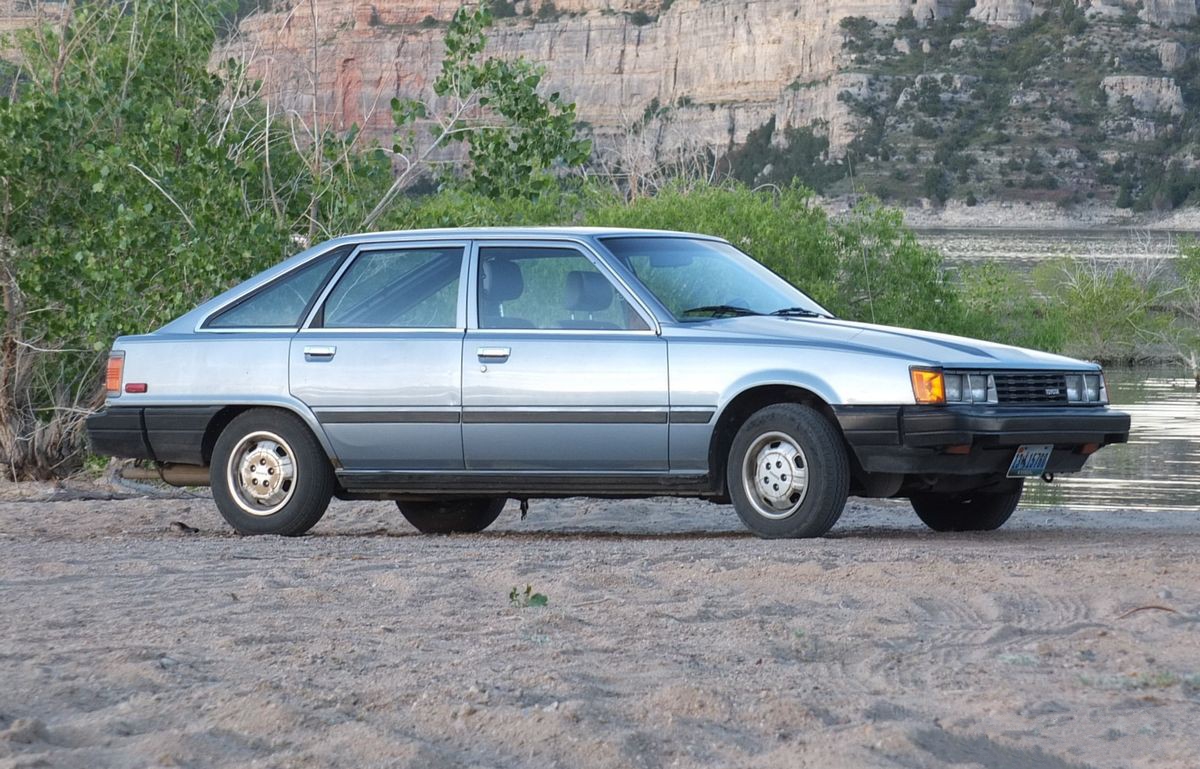Indeed without doubt Toyota Camry is considered one of the most popular cars in the world today. The Toyota Camry was first unveiled by the Japanese company Toyota in 1980 as a designation for four-door saloon versions of the second-generation Celica, and ever since still in production, obviously with a large number of improvements over the decades. Camry was one of the most popular ever produced by Toyota as it was named the best selling car in the United States for no less than ten years. Moreover, it was a best seller in Australia, Canada and Asia.
1983 – 1987 Toyota Camry

Considered a protégé of Celica, Camry should therefore be strictly viewed as a predecessor to the series production which launched in its own right in the familiar transversely mounted front engine, front-wheel drive format in March 1982.
1987 – 1991 Toyota Camry

The 1987 version of the Camry is actually the second generation of the vehicle. The new model came with an all-wheel drive system while new engines were only available as options. The 2.5 liter V6 engine that can produce no less than 160 horsepower is a first for this model, the previous versions being equipped with 130 horsepower four-cylinder engines.
1991 – 1996 Toyota Camry

Member of the third generation of the vehicle, the 1991 Camry was initially available only on the Japanese market. The US edition of the car was officially rolled out in 1992, the same year when the Japanese company unveiled an upgraded model of Camry. The 1991 version of the car had a four wheel steering system as well as a 2.0 liter V6 engine which was formerly known as Toyota Camry V6 Prominent 4WS. As mentioned, in 1992 Toyota came with a face lifted Camry which had a new grille and an improved air conditioning system. Moreover, the car maker introduced the Camry Coupe, a special version of the car especially supposed to compete with Honda Accord Coupe.
1997 – 2001 Toyota Camry

The fifth generation of Toyota Camry had different launch dates around the world, being first unveiled in Japan in December 1996 and then introduced in the United States in 1997. Available in two body styles, a 4-door sedan and a 4-door station wagon (which was only marketed outside the United States), the new Camry comes with two engine versions: a 2.2 liter engine which could develop 133 horsepower and a 3.0 liter that produces 194 horsepower. The new model was assembled in Tsutsumi, Japan, Georgetown, Kentucky and Altona, Australia.
2001 – 2004 Toyota Camry

Launched in September 2001, the new Camry was larger than the previous versions and was only available as a sedan without a station wagon edition. However, the idea of a station wagon wasn’t entirely abandoned, the Japanese company introducing the Sienna minivan, a vehicle which was exclusively addressed to the North American market. Assembled in multiple factories around the world, including Japan, Australia, Thailand and Malaysia, the US version of the new Camry had manual transmissions and four-cylinder engines providing from 157 to 225 horsepower.
2004 – 2009 Toyota Camry

Launched in 2003, the new model of Camry Solara marks the beginning of the second generation of the vehicle which came with a completely different design than the main model of the Camry. Using elements from Lexus, the new Camry had a 2.4-liter engine while another 3.3-liter V6 engine was available as an option. Moreover, it had a 5-speed automatic transmission similar to the one installed on the sedan. In 2004, Toyota brought out a face lifted version of Camry Solara which had new headlights and taillights as well as an upgraded front bumper and chromed grille.
2007 – 2011 Toyota Camry

The Japanese version of the Toyota Camry was manufactured in Aichi, Japan, and came with a couple of new elements in comparison with the models produced for the other markets. Moreover, Daihatsu had a similar model called Altis which was introduced in January 2006 and shared a lot of parts with Toyota’s Camry. The Altis was powered by a 2.4 liter 4 cylinder engine while the Toyota vehicle was available in multiple engine versions.
2009 – 2014 Toyota Camry

Toyota Camry Hybrid made its first appearance at the 2009 North American International Auto Show (NAIAS). The Camry Hybrid is equipped with a 2.4L engine that assures 110 kw (147 hp) at 6000 rpm and a maximum torque of 138 lb-ft (187 Nm) at 4400 rpm. The Toyota Camry Hybrid enters market occupied by the hybrids: Chevrolet Malibu, Ford Fusion, Honda Civic, Nisan Altima, Saturn Aura and Mercury Milan.
2011 – 2014 Toyota Camry

Toyota introduced the all-new, seventh-generation Camry, America’s best-selling car for nine years running and 13 of the past 14 years. The 2012 Camry debuts a bold, sophisticated new design with a more spacious interior, improved driving dynamics and an even quieter ride than before. With class leading safety, fuel economy and multi-media technology added in, the end result is the best Camry ever made. Introduced in 1983, the Toyota Camry would later establish the template for the modern midsize sedan, setting benchmarks for Quality, Dependability and Reliability, along with a comfortable, quiet ride. Since that time, Toyota has sold more than 15 million Camry models worldwide.
2014 – 2017 Toyota Camry

In 2014 Toyota introduced a revamped Camry as a 2015 model. While it looks to be only a face lift, the automaker claims it’s wearing more than 2,000 new components. On the exterior, the model comes with a prominent character line, a muscular front end with a huge trapezoidal grille, new headlights, LED daytime running lights, slightly revised side lines and a rear end that looks almost like the Lexus ES’ one. Inside, the automaker claims to have put better materials, made more room, design a new center stack console, fit some satin chrome trimmings, better soundproofing materials and drop more tech in it: 4.2-inch TFT screen in between the main gauges, Lane Departure Alert, Adaptive Cruise Control, Pre-Collision System and Blind Spot Monitoring with Rear Cross Traffic Alert. Mechanically, the 2015 Camry adds more spot welts for the door openings to increase structural rigidity, a tuned electric power steering as well as a new suspension, combining McPherson struts up front and a multi-link configuration at the rear.
2017 – Present Toyota Camry

A whole new generation Toyota Camry was released in 2017, built on a completely new platform and wearing a design never saw before in the range. The 2018 model year Camry uses the TNGA (Toyota New Global Architecture) platform, also coming with new engines and transmission. Design wise, you could almost say it’s a Lexus. It is also the first Toyota Camry that can be had in a two-tone color configuration, making it look even sleeker. The completely redesigned interior is a fusion of functionality, futuristic styling, and a high degree of personal space and craftsmanship. All surfaces throughout the cabin-dashboard, instrument panel, center console, door trim, etc.-employ the highest grade of soft touch and premium materials. The new Toyota Camry features Toyota’s latest Human Machine Interface (HMI) whose next-generation display technology offers a unique level of integrated information with minimal distraction.
 Spot Dem Everything About Cars
Spot Dem Everything About Cars






